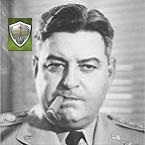vahauser
Posts: 1644
Joined: 10/1/2002
From: Texas
Status: offline

|
And here is another issue. According to the Wikipedia, the 15"/47 guns on the Bismark had a theoretical maximum rate of fire of 2.4 rpm. What this means is that different sources will give different information. I personally give a lot more credibility to the 2.4rpm number than the 3.0rpm number cited in a different source. But it is likely that different sources cite different numbers for a variety of different reasons: wartime propaganda, corporate/govermental disinformation, typographical errors, etc. My guess is that there are no 100% reliable rate of fire numbers out there.
So, even if we wanted to use theoretical maximum rates of fire as a basis of determining firepower, we are still left to our best guesses as to what exactly those theoretical rates of fire are.
In any event, the square root of a number provides a very sweet tool to use when trying to quantify non-linear factors:
1. It compresses numbers. This is a good thing when you are dealing with educated guesswork since it will produce conservative estimates. Better to err on the side of caution. The square root is perfect for this.
2. Since it is non-linear, it can be used to quantify data that hasn't been (or is not capable of being) identified yet.
Naval ordnance can be classified as heavy (9.4" and above), medium (between 7.2" and 9.4"), light (between 5.5" and 7.2"), and very light (less than 5.5").
Limiting ourselves to heavy ordnance, for now, here is a formula for calculating heavy-gun actual combat rates of fire (ACRoF):
TMx = theoretical maximum rate of fire
ACRoF = SQRT(TMx - 1)
To my mind, this still produces estimated combat rates of fire that are too high, but the numbers are not outrageous.
Bismark TMx = 2.4, ACRof = SQRT(1.4) = 1.183
Yamashiro TMx = 1.5, ACRoF = SQRT(0.75) = 0.866
Iowa TMx = 2.0, ACRof = SQRT(1.0) = 1.0
A different formula would be needed to calculate medium, light, and very light ordnance, but the formulas would all be related in that they would all use SQRT for the reasons cited above.
_____________________________
|
 Printable Version
Printable Version









 New Messages
New Messages No New Messages
No New Messages Hot Topic w/ New Messages
Hot Topic w/ New Messages Hot Topic w/o New Messages
Hot Topic w/o New Messages Locked w/ New Messages
Locked w/ New Messages Locked w/o New Messages
Locked w/o New Messages Post New Thread
Post New Thread